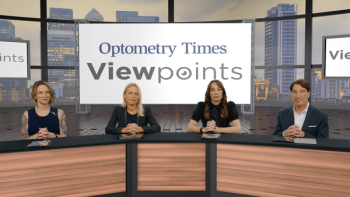
Turning theory into practice for myopia management
Langis Michaud, OD, MSc, FAAO, FSLS, FBCLA, FEAOO, shares highlights from his AOA 2022 presentation, "Myopia Management: One Child at a Time (Translating theory into practice)."
During the 2022 American Optometric Association (AOA) Optometry's Meeting, Langis Michaud, OD, MSc, FAAO, FSLS, FBCLA, FEAOO, presented, "Myopia Management: One Child at a Time (Translating theory into practice)."
This transcript has been lightly edited for clarity:
So my name is Dr. Langis Michaud, professor at school of optometry University of Montreal.
I will present a lecture on
The main approach will be to convince practitioners to customize their diagnosis and their management plan. Obviously, every kid is different, and we have a lot of tools available in our hands. So, we have to decide which one will suit best for that particular patient.
And if you have two kids, for example ... then it may be a very different story. The first one having a very long eye already at a young age and the other one having a short eye. So, the approach will be totally different, because we know that in myopia what matters is ... the elongation of the eye.
...
So, we want to restrict that elongation which is natural with, you know, kids growth, but, you know, with myopia, we know that we can grow by .4, .5 centimeters per year, so it's way too much. So, a very long eye already, you know, we will have more intensive therapy. So, most of the time, combining medication ... and optical devices like ortho-k lenses or soft multifocal lenses...
For the other kid with a very short eye we may have more conservative approach, anti-myopia glasses for example. We have access to that and to them in Canada, they are very efficient and it was designed as efficient as soft multifocal lenses. And even in contact lenses based on the pupil size/ pupil diameter, based on the refractive error, we will select differently if the patient is suitable for ortho-k, for example, and/or for soft lenses.
Let's give an example. If a kid has a very flat cornea 40-40.5 diopters as the average curves and with low eccentricity and minus three minus four, this candidate is not really a good candidate for orthokeratology because the cornea is already flat. So you will not generate enough compression of the epithelial tissue to generate the myopic the focus that you want to generate. So soft lenses would be a more appropriate choice for that kid.
And what we have to understand as well, is really did on a dose response basis, meaning that the higher the myopia, the faster the evolution, the higher the focus that we provide in the system must be. The higher the myopia, the higher the demand, higher the dose and the dose is defined by the ad power and the area impacting the retina.
So, we have to play with the parameters of the ortho-k lenses customizing if possible with softwares, and there are plenty available in the market, and/or to select the appropriate and at least high and power multifocal soft lenses and again, we have plenty of choice now with high ad and higher ads recently run into market by some manufacturers.
Newsletter
Want more insights like this? Subscribe to Optometry Times and get clinical pearls and practice tips delivered straight to your inbox.











































.png)


